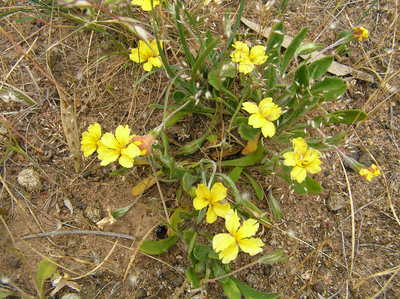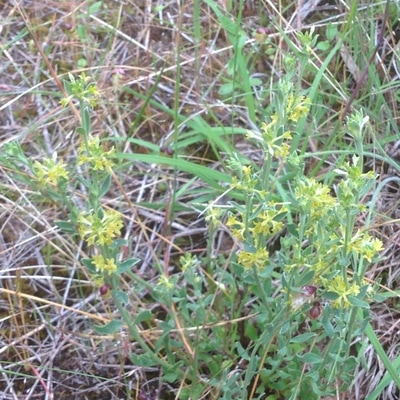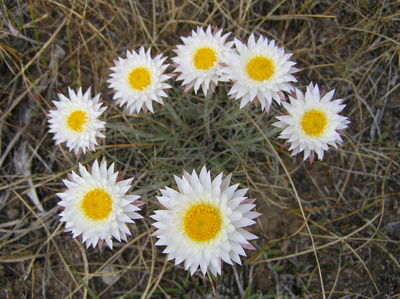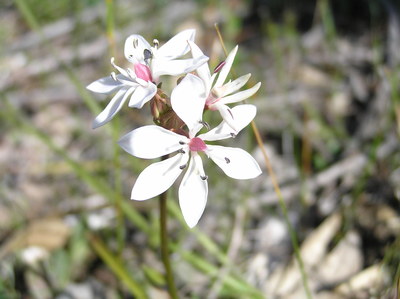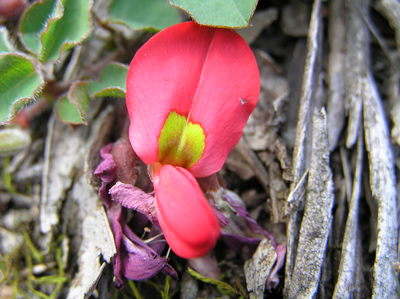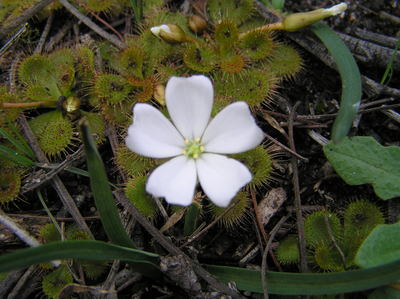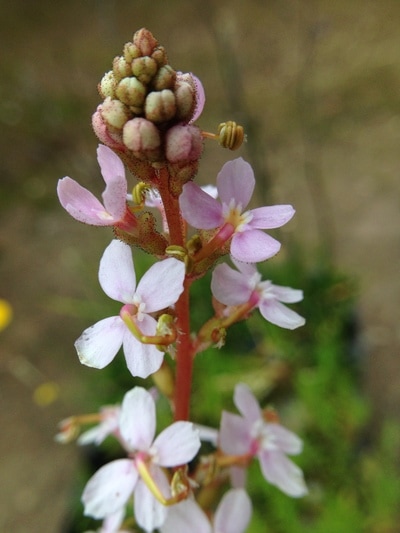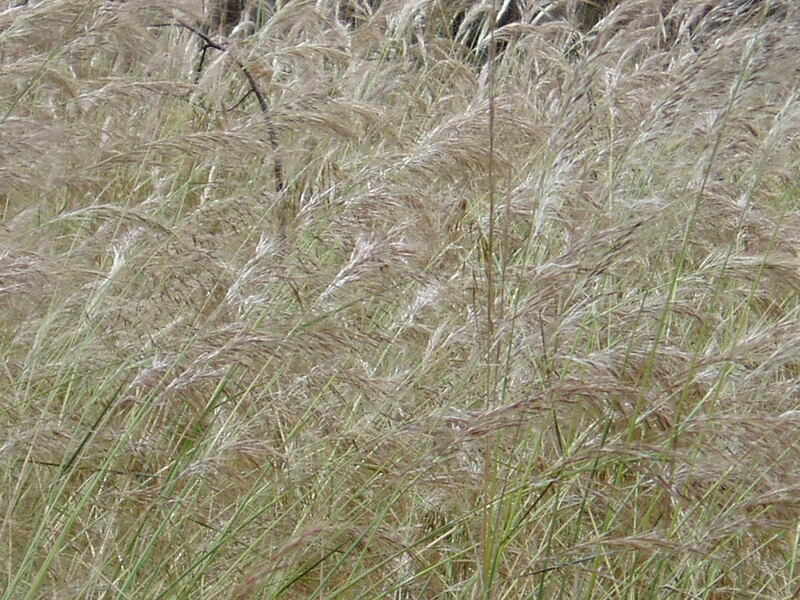Wild plants of Inverleigh |
Wild plants of Inverleigh
Inverleigh's colourful beginnings centre around Lawson's Tree, a River Red Gum, Eucalyptus camaldulensis where William Lawson set up his blacksmith shop in the early 1830's. An appropriate beginning to the Inverleigh story since this noteworthy tree, which can still be seen today, is one of many River Red Gums that can be found along the Leigh River that flows through Inverleigh as well as on the plains throughout this district.
The River Red Gum is one of Australia's longest living Eucalypts, living for over 400 years locally and a tree in the Casterton district (Big Red) is now well on its way to 800 years old. Interestingly the botanical name for the River Red Gum is derived from an order of Tuscan hermit monks that live in mountains near Florence, Italy - the Camaldolese monks. How it got the name of Eucalyptus camaldulensis is another fascinating story. Click here to read this story
The River Red Gum is one of Australia's longest living Eucalypts, living for over 400 years locally and a tree in the Casterton district (Big Red) is now well on its way to 800 years old. Interestingly the botanical name for the River Red Gum is derived from an order of Tuscan hermit monks that live in mountains near Florence, Italy - the Camaldolese monks. How it got the name of Eucalyptus camaldulensis is another fascinating story. Click here to read this story
The River Red Gums look like giant loners when you see them in farm paddocks, but to stay healthy they need the support of many other local trees, shrubs and wild flowers. Notably five wattle species (Golden Wattle, Acacia pycnantha; Black Wattle, A. mearnsii; Blackwood, A. melanoxylon; Lightwood, A. implexa and Hedge Wattle, A. paradoxa), two she-oak species (Black Sheoak, Allocasuarina littoralis and Drooping Sheoak, A. verticillata) and the Silver Banksia, Banksia marginata as well as many shrubs and grassland plants. Prominent amongst the taller shrubs is the Sweet Bursaria, Bursaria spinosa which itself can live for several hundred years. It is Related to the pittosporum that is common in suburban gardens. The Sweet Bursaria is now quite rare but is very handsome and provides an important service in the local bushland. It attracts parasitic wasps that feed on the nectar found on the Bursaria's summer sprays of white flowers. These harmless wasp lays their eggs on leaf eating caterpillars mostly on eucalypts, their larvae eating the caterpillars alive.

Inverleigh is also famous for its 1,000ha reserve, three kilometers north of the township. The Inverleigh Nature Conservation Reserve was originally declared as the Inverleigh Common in the 1860's to provide a source of firewood for locals as well as somewhere to graze stock in times of drought. Ironically the wildflowers that are found there are so rare and numerous that it is now protected and it is illegal to collect firewood or graze stock much to the annoyance of some locals.
Prominent among the wildflowers found in the Inverleigh Nature Conservation Reserve are its orchids. There are over 50 different species here, the rarest of which is the Dwarf Spider Orchid, Caladenia pumila which was thought to be extinct, last seen in 1926 and recently rediscovered in 2009 when only two plants were found. Enthusiasts are eagerly waiting for them to flower again but they have been disappointed so far. Another rare Spider Orchid which is named after the town is the Inverleigh Spider Orchid, photos.rnr.id.au/2007/10/13/ . This superb pink and white plant flowers between September and October, stands over 30 cm tall and is pollinated by a small thynnid wasp that is tricked into thinking it is mating with a female wasp of its species.
Prominent among the wildflowers found in the Inverleigh Nature Conservation Reserve are its orchids. There are over 50 different species here, the rarest of which is the Dwarf Spider Orchid, Caladenia pumila which was thought to be extinct, last seen in 1926 and recently rediscovered in 2009 when only two plants were found. Enthusiasts are eagerly waiting for them to flower again but they have been disappointed so far. Another rare Spider Orchid which is named after the town is the Inverleigh Spider Orchid, photos.rnr.id.au/2007/10/13/ . This superb pink and white plant flowers between September and October, stands over 30 cm tall and is pollinated by a small thynnid wasp that is tricked into thinking it is mating with a female wasp of its species.
A favourite wildflower with visitors to the district in Spring is the beautiful Chocolate lily, Arthropodium strictum that has the remarkable feature of smelling like the best quality Belgian chocolate. There are many other beautiful plants in the Inverleigh district which has a remarkable diversity of species that are fascinating to visitors to its natural areas at all times of the year.
For more information on the flora of the Inverleigh Nature Conservation Reserve try;
natureshare.org.au/collections/53b3981ae35eb1298400017d/species_items
For more information on the flora of the Inverleigh Nature Conservation Reserve try;
natureshare.org.au/collections/53b3981ae35eb1298400017d/species_items
Here is a sample of what you will find on a Spring wildflower walk. Hover your mouse for their names
If you would like to explore more about the indigenous plants of Inverleigh and surrounds, the Teesdale Grassy Woodlands Reserve is a lovely walk. Click here to read more about this 22 ha special place

